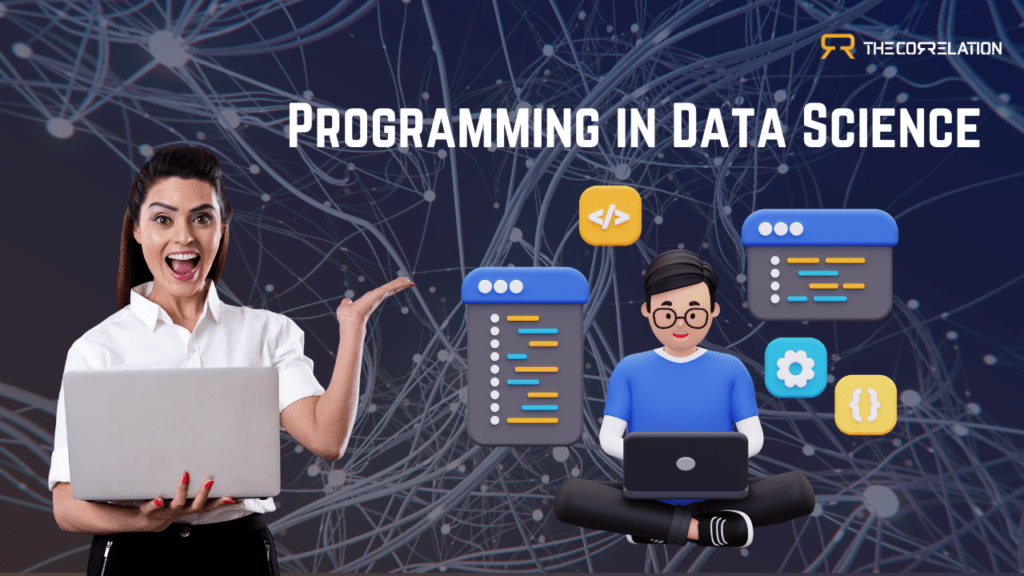Programming languages and tools to gather, analyze, and understand massive numbers, create models, and provide insights is crucial in data science. The following essential elements are typically addressed under this topic:
Core Components of Programming in Data Science
Programming Languages for Data Science:
Python: Because of its ease of use and large library of functions like NumPy, Pandas, Scikit-Learn, and TensorFlow, Python is the most widely used language for data science. It is employed in deep learning, machine learning, and data manipulation.
Source: Programming Languages for Data Science
R: Widely used in statistical visualization and analysis. ggplot2 for visualization, dplyr for data manipulation, and caret for machine learning are popular packages.
SQL: Needed to manage structured data, query relational databases, and carry out data extraction, transformation, and loading (ETL) procedures.
Data Manipulation and Wrangling:
Pandas (Python): Pandas is a Python data manipulation toolkit that offers operations and data structures for working with time series and numerical tables. Data transformation, restructuring, cleansing, and combining are important jobs.
dplyr (R): The R package dplyr (R) contains functions for filtering, aggregating, summarizing, and merging datasets, enabling effective manipulation of data frames.
NumPy (Python): NumPy is a library that supports arrays, matrices, and various mathematical functions for numerical computation.
Data Visualization:
Matplotlib and Seaborn (Python): Python libraries for making static, animated, and interactive visualizations include Matplotlib and Seaborn. beneficial for creating charts such as heatmaps, histograms, scatter plots, and line plots.
ggplot2 (R): The R data visualization program ggplot2 (R) is based on the “Grammar of Graphics,” enabling users to generate intricate multi-layered charts.
Plotly and Bokeh: Plotly and Bokeh are web application-integrable tools for making interactive plots.
Source: Programming Language Trends in Data Science
Machine Learning and Data Modeling:
Scikit-Learn (Python): A Python package called Scikit-Learn is used to create machine learning models using methods including dimensionality reduction, clustering, regression, and classification.
TensorFlow and PyTorch (Python): Deep learning libraries that facilitate the creation of neural networks for image recognition, reinforcement learning, and natural language processing (NLP).
Caret (R): Caret (R) is a package in R that offers a uniform interface to make training and assessing machine learning models easier.
Data Storage and Management:
SQL databases: Mastering the use of SQL queries to store and retrieve structured data from databases such as MySQL, PostgreSQL, or SQLite.
NoSQL Databases: mastering non-relational databases, such as MongoDB, to manage unstructured data, including text, photos, and data from social media.
Big Data Tools: Overview of tools for managing extensive data processing and analysis, such as Apache Hadoop and Apache Spark.
Cloud Computing and Data Science Environments:
Jupyter Notebooks: Write and execute code, produce visuals, and record analyses in a single document using Jupyter Notebooks, an interactive coding environment.
Cloud Platforms: Using cloud services for computing, scalable data storage, and data science model deployment (AWS, Azure, Google Cloud).
Source: Benefits of Programming Languages
Version Control and Collaboration:
Git and GitHub: Crucial resources for version control that let data scientists work together, keep track of code modifications, and preserve a project’s development history.
Software Development Best Practices:
Writing Modular Code: Writing modular code involves utilizing libraries, functions, and classes to create reusable and modular code.
Testing and Debugging: Methods for examining code to make sure it is reliable and correct (unit and integration testing, for example).
Code Optimization: Code optimization is the process of analyzing and improving code to increase performance, especially when managing big datasets.
Source: Data Science Programming
Automation and Scripting:
Automating Data Pipelines: Creating scripts to automate data extraction, transformation, and loading (ETL) procedures is known as “automating data pipelines.”
Workflow Management Tools: Managing and automating intricate workflows with the aid of programs like Apache Airflow or Luigi.
Technical expertise in programming languages, data administration, machine learning, visualization, and manipulation are all necessary for programming in data science. Data scientists may create effective and scalable solutions for data-driven decision-making in a variety of sectors by becoming experts in these fields.


